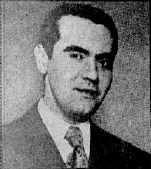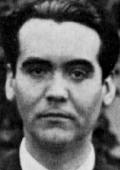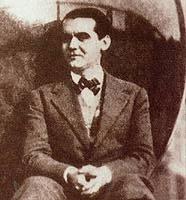Federico García Lorca is the leading Spanish playwright and poet
of the twentieth century. His twelve major works for the theatre have been
produced around the world. They are El maleficio de la mariposa (The
Butterfly's Evil Spell), 1919, Mariana Pineda, 1925, Los títeres de
cachiporra (The Billyclub Puppets), 1928, La zapatera prodigiosa (The
Shoemaker's Prodigious Wife), 1930, Amor de Don Perlimplín con Belisa en su
jardín (Don Perlimplín), 1931, Así que pasen cinco años (Once Five Years
Pass), 1931, El público (The Audience), 1933, Bodas de sangre (Blood
Wedding), 1933, Yerma, 1934, Doña Rosita the Spinster), 1935, and La casa de
Bernarda Alba (The House of Bernarda Alba), 1936.

Lorca's poetry and plays combine "elements of Andalusion folklore with
sophisticated and often surrealistic poetic techniques, which cut across all
social and educational barriers". He is said to have succeeded in the creation
of a viable poetic idiom for the stage, superior to the works of his
contemporaries, Yeats, Eliot and Claudel.

"Lorca's reconquest of the Spanish public, and his growing prestige
among scholars is a relatively recent phenomenon. When his works began
to recirculate freely, many people who knew only the 'Gypsy Ballads'
and two or three of the more popular plays considered Lorca a poet of
limited interest and local color.

"When his later poetry and experimental plays such as 'The Public' came
to be better known and understood, attitudes changed. 'Today,' observed
Jose Luis Cano, a literary critic and biographer of Lorca, 'Lorca's
reputation and popularity have soared, and they are based primarily on
'Poet in New York', Lorca's harrowing account of the year he spent in
America. It is now recognized as one of the great monuments of
20th-century poetry'."
